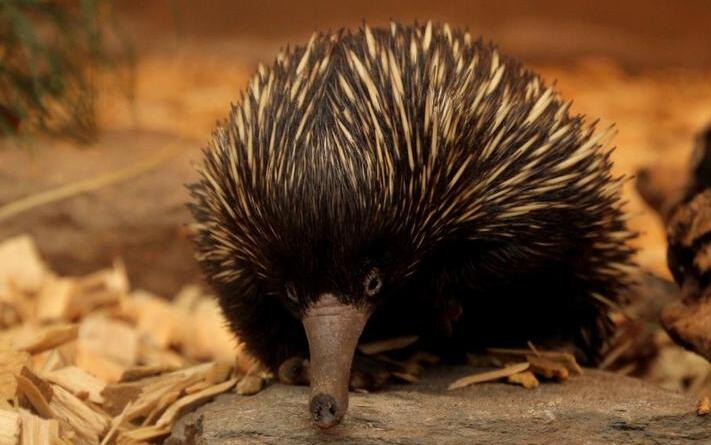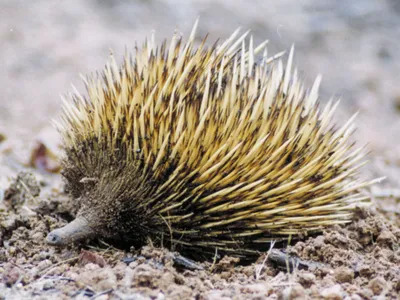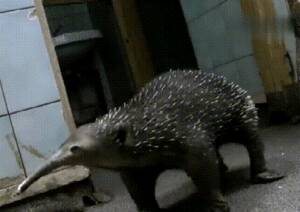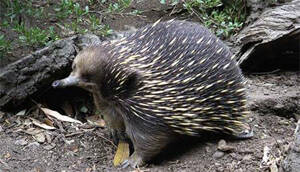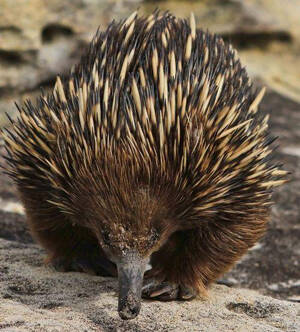platypus
IUCN
LCBasic Information
Scientific classification
- name:platypus
- Scientific Name:Ornithorhynchus anatinus
- Outline:Monotremata
- Family:Monotremata Ornithorhynchidae
Vital signs
- length:
- Weight:
- lifetime:
Feature
Distribution and Habitat
Appearance
Details
The platypus (Ornithorhynchus anatinus) is a small Australian amphibian mammal known for its strange combination of primitive features and special adaptations, particularly its flat, almost comical beak, which early observers believed was sewn onto the mammal's body duck's beak. There is noticeable white fur under the eyes, adding to its unique appearance. The hair on the rest of the body is dark brown to light brown above and lighter underneath.
Platypuses are common in the waterways of eastern Australia, usually feeding on benthic invertebrates, but will occasionally prey on surface frogs, fish or insects. This shy creature feeds most actively from dusk to dawn, taking shelter during the day in burrows dug in river banks. It was well adapted to its aquatic lifestyle, with a flat, torpedo-shaped body, dense waterproof fur, and strong forelimbs used for swimming and digging. Even the head is streamlined, with each ear and a small eye placed in a groove. While the platypus's senses of vision, smell, and hearing are essentially shut down when it's feeding underwater, it has a unique electromechanical system of electroreceptors and tactile receptors that allow it to navigate perfectly underwater. Similar electroreceptors are also found in echidnas, which together with the platypus form the order Monotremes, a unique group with an extremely ancient history.
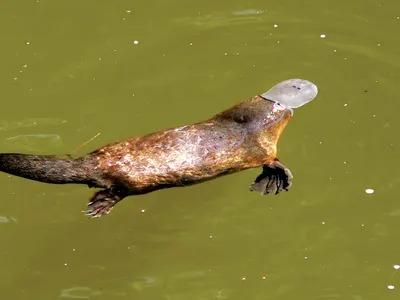
Natural History
Platypuses are usually solitary, spending their lives either feeding along the bottoms of rivers, streams and lakes or resting in burrows dug on their banks. They are energetic and feed almost continuously in the water, using their flat bills to shovel through streambed debris in search of larval insects and freshwater crustaceans (a favorite food). The platypus uses its complex electromechanical system to detect tiny electrical signals from the muscles of its prey. After feeding, it retreats into its burrow, whose entrance is large enough to hold just the platypus and squeeze out excess moisture from its fur.
The platypus ranges from the highlands of Tasmania and the Australian Alps to lowland areas close to the sea. Although the platypus is sometimes seen swimming in salt water, the platypus must feed in fresh water, where its electronic navigation system can function. The platypus is found in east- and west-flowing river systems in Australia's eastern states, but is absent in northern Queensland, and unlike its close relative the echidna, the platypus does not appear to have colonized the island of New Guinea.
Generally speaking, platypuses are most active at dawn and dusk (twilight), but depending on the season, cloud cover, stream productivity, and even personal preference, platypuses can also be active during the day. It is understood that platypuses do not hibernate. However, their body temperature is unusually low for a mammal (about 32 °C [90 °F]). Studies have shown that they can maintain a constant body temperature even after prolonged immersion in water with temperatures as low as 4 °C (39 °F), a fact that disproves the idea that monotremes are unable to regulate their body temperature.
Form and function
The length of the platypus ranges from 38 to 60 cm (15 to 24 in); males are usually larger than females. Aquatic adaptations include a flat, streamlined body, dorsally located eyes and nostrils, and dense, waterproof fur that keeps the platypus well insulated. The long guard hair protects the soft undercoat and keeps it dry even after hours in the water. The broad webs on the front feet extend well beyond the claws and are essential for propelling the animal forward through the water. The paddle-like tail acts as a stabilizer while swimming, while the back feet act as rudders and brakes.
The platypus's strange skeletal features include ancient, strong shoulder girdle and short, broad humerus bones that provide extensive muscle attachment areas for the unusually strong forelimbs. The outside of the beak is covered with soft, sensitive skin. Inside the beak, adult platypuses have no real teeth and instead develop flat pads composed of hardened gum tissue. Male platypuses have a bony spur on the inside of each ankle that connects to a venom gland located on the upper thigh. Spurs can be used for defense, and if the spurs penetrate the skin, the venom is potent enough to kill small animals and cause severe pain to humans.
Life cycle and reproduction
Despite their large numbers, little is known about the life cycle of platypuses in the wild, and few platypuses have been successfully bred in captivity. Both sexes avoid each other except when mating, and they don't mate until they are at least four years old. Males often fight during the breeding season, inflicting wounds on each other with their sharp ankle spurs. Courtship and mating occur in the water from late winter to spring; mating timing varies with latitude, occurring earlier in areas further north of the range and later in areas of Vietnam. Mating is a laborious affair. In one recorded video, the male was seen grabbing the female's tail tightly with his mouth, and the female led him on an exhausting chase.
Males do not participate in raising the young. Females build purpose-built nursery burrows where they usually lay two small leathery eggs. The gestation period is at least two weeks (and may be as long as a month), and it may take another 6 to 10 days for the eggs to hatch. The female incubates the eggs by curling them around the eggs and touching her beak with her tail. Each baby platypus hatches from an egg with the help of an incubator. Egg teeth and fleshy nodules (caruncles) are structural remnants of the reptilian past. The pups receive milk from special nipple hairs and are protected in their burrows, sucking for three to four months before becoming independent. The weight of a hatchling platypus typically increases 20-fold in the first 14 weeks of life, and their teeth are lost soon after the young leave their burrows to feed on their own.
Males and females are fully developed between 12 and 18 months of age and become sexually mature at approximately 18 months. They have a long lifespan for a small mammal. Some studies have documented individuals living in the wild for more than 20 years. Platypuses can survive nearly 23 years in captivity.
Evolution, Paleontology and Classification
Aquatic-adapted platypus-like monotremes may have evolved from more common terrestrial monotremes. Platypus-like monotremes first appear in the fossil record about 110 million years ago, during the early Cretaceous period, when Australia was still connected to South America through Antarctica. Until recently, this Cretaceous monotreme, Steropodon galmani (famous for its stunning opal jaw), was placed in the platypus family, but based partly on molecular studies and partly on tooth structure, it is now classified as its own family, Steropodontidae.
The extant platypus family (Ornithorhynchidae) includes the extinct genera Monotrematum (dated to the Paleocene epoch about 61 million years ago) and Ornithorhynchidae (which may have first appeared in the Oligocene and Miocene epochs about 23 million years ago) near the border) and extant Ornithorhynchosaurus. The discovery of M. sudamericanum in 62-million-year-old Patagonian sediments confirms that platypuses once ranged across the once geographically connected southern continent (Gondwana). Monotrematum and Obdurodon species retained functional teeth and were 60 cm (24 in) longer and stronger than the living platypus (Obdurodon).
Oviparous
Oviparous, shedding undeveloped eggs instead of live larvae. The eggs may be fertilized before release, as in birds and some reptiles, or fertilized outside the body, as in amphibians and many lower animals. Generally, the number of eggs produced by oviparous species greatly exceeds the number of offspring of species that produce young, but the chances of survival are reduced due to the lack of maternal protection. Compare viviparous.

